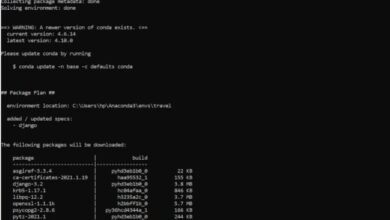How to stop spam messages on whatsapp

One effective way to stop spam messages on WhatsApp is by reporting and blocking the spam contacts. WhatsApp allowing us to stay connected with friends, family, and colleagues. However, this popular messaging platform is also susceptible to spam messages. Spam messages can be annoying, intrusive, and sometimes even malicious. We will cover how to stop spam messages on WhatsApp. Helping you maintain a clean and secure messaging experience.
Stop spam messages on whatsapp
Be cautious of unknown contacts:
Most common sources of spam messages on WhatsApp is unknown contacts. If you receive a message from someone you don’t know may exercise caution. Do not open suspicious links or download unknown attachments. Delete such messages and block the sender if necessary.
Identify common spam message patterns:
Spam messages often share common characteristics: generic greetings, unusual spellings, or excessive use of capital letters. They may also contain promises of prizes, money, or suspicious offers. Look for these patterns to help identify potential spam messages.
Avoid sharing personal information:
Legitimate contacts and companies will not ask for sensitive personal information: bank account details, passwords, or social security numbers, via WhatsApp. Be wary of any message that requests such information and refrain from sharing it.
Don’t forward chain messages:
Chain messages are a popular medium for spreading spam on WhatsApp. These messages often ask you to forward them to multiple contacts. Break the chain and avoid forwarding such messages. Instead, inform the sender about the risks associated with chain messages.
Enable two-step verification:
WhatsApp provides a two-step verification feature to enhance security. Enable this feature by going to WhatsApp Settings > Account > Two-step verification. With this feature, you’ll need to enter a PIN periodically, adding an extra layer of protection against unauthorized access.
Report and block spam contacts:
WhatsApp allows you to report and block spam contacts easily. If you receive a spam message, report it by selecting the message, tapping on the “Report” option, and confirming your choice. Additionally, you can block the contact to prevent further messages from that individual.
Here are the steps to report and block spam contacts on WhatsApp:
- Open WhatsApp: Launch the WhatsApp application on your smartphone.
- Identify the spam contact: Identify the contact from whom you received the spam message.
- Open the chat: Tap on the chat of the spam contact to open the conversation.
- Access contact options: On the chat screen, look for the contact’s name at the top. It may be displayed as the person’s name or phone number.
- Tap on the contact’s name: Tap on the contact’s name to access the contact options.
- Scroll down and select “Report”: Scroll down the contact info page until you find the option labeled “Report.” Tap on it.
- Choose the reason for reporting: WhatsApp will provide you with a list of reasons for reporting the contact. Select the most appropriate reason that corresponds to the spam behavior. This helps WhatsApp understand the nature of the spam accurately.
- Block the contact: After reporting the contact, you can choose to block them to prevent further messages. On the contact info page, look for the option labeled “Block.” Tap on it and confirm your decision to block the contact.
By following these steps you can report and block spam contacts on WhatsApp effectively. Reporting helps WhatsApp identify and take action against spammers, while blocking ensures that you no longer receive messages from the reported contact.
Utilize spam filters:
Consider using third-party apps that offer spam filters specifically designed for WhatsApp. These apps analyze incoming messages and detect potential spam based on various criteria. They can automatically filter out spam messages, ensuring a clutter-free experience.
Keep your app updated:
WhatsApp regularly releases updates with security patches and enhancements. Keeping your app up to date ensures you have the latest security features to combat spam. Enable automatic updates or manually check for updates in your app store.
Understanding spam text messages and their methods:
Spam text messages are unsolicited, unwanted messages sent in bulk to a large number of recipients. They are typically sent for fraudulent, promotional, or malicious purposes. Spammers use various methods to send spam texts, including obtaining phone numbers from data breaches, purchasing contact lists, or using automated software to generate random phone numbers.
How to spot a text scam:
To spot a text scam these following signs:
- Unsolicited messages: If you receive a text message from an unknown number or an unexpected sender, it could be a scam.
- Urgency and pressure: Scammers often create a sense of urgency, pressuring you to take immediate action or provide personal information.
- Requests for personal information: Be cautious of any text message asking for your personal information, such as bank details, passwords, or Social Security numbers.
- Poor grammar and spelling: Many spam texts contain spelling errors, awkward phrasing, or grammatical mistakes.
- Suspicious links or attachments: Do not click on links or download attachments from unknown or suspicious sources, as they may contain malware or lead to phishing websites.
What is WhatsApp doing about spam texts:
WhatsApp takes spam seriously and employs several measures to combat it:
- Advanced machine learning algorithms: WhatsApp uses machine learning techniques to analyze messages and identify potential spam patterns.
- User reporting: WhatsApp allows users to report spam messages or contacts directly from within the app.
- Account banning: WhatsApp bans accounts found to be involved in spamming activities.
- Encryption and security: WhatsApp’s end-to-end encryption ensures that messages are secure and not accessible to unauthorized parties.
- Regular updates: WhatsApp releases updates with security improvements and spam detection enhancements.
How you can stop spam on WhatsApp:
To stop spam on WhatsApp, you can take the following steps:
- Report and block: Report spam messages or contacts by tapping on the message, selecting “Report,” and blocking the contact.
- Enable two-step verification: Activate two-step verification in WhatsApp settings to add an extra layer of security to your account.
- Use spam filters: Consider using third-party apps or tools that provide spam filtering specifically for WhatsApp.
- Keep your app updated: Regularly update your WhatsApp application to ensure you have the latest security features and spam prevention measures.
What else can be done to stop spam texts:
You can take the following actions to minimize spam texts:
- Register with the National Do Not Call Registry (country-specific): By adding your phone number to the registry, you can reduce the number of telemarketing calls and potential spam texts you receive.
- Be cautious of sharing your phone number: Be selective about sharing your phone number with websites, apps, or businesses to minimize the chances of your number being exposed to spammers.
- Use anti-spam apps: Install reputable anti-spam apps on your smartphone that can help identify and block spam messages.
- Be vigilant with personal information: Avoid sharing personal information, such as phone numbers or email addresses, on public platforms or with unknown individuals or organizations.
Why you’re getting spam messages in the first place:
There are several reasons why you may receive spam messages:
- Data breaches: Your phone number may have been obtained through a data breach of a website or service you used.
- Purchased contact lists: Spammers often purchase contact lists from shady sources, which include phone numbers for their spam campaigns.
- Random number generation: Some spammers use automated software that generates random phone numbers to send spam messages to.
How to address the problem at its root:
Addressing the problem of spam messages at its root requires a collective effort:
- Legislation and enforcement: Governments need to enact and enforce strict laws against spamming activities to discourage spammers.
- Industry collaboration: Messaging platforms, telecom companies, and internet service providers can work together to implement robust spam detection and prevention measures.
- User education: Educating users about the risks of spam messages, how to identify them, and the importance of reporting and blocking spam can empower individuals to take action against spammers.
By implementing these measures and fostering a collaborative approach, we can collectively work towards minimizing the occurrence of spam messages and protecting users from their negative impacts.
FAQ
Q1: What are some common characteristics of spam messages on WhatsApp?
Spam messages on WhatsApp often exhibit certain patterns: generic greetings, unusual spellings, excessive use of capital letters, promises of prizes or money, and suspicious offers. Being aware of these characteristics can help you identify potential spam messages.
Q2: Should I open suspicious links or download attachments from unknown contacts?
No, it is strongly advised not to open suspicious links or download attachments from unknown contacts. These can be potential sources of malware, viruses, or phishing attempts. Delete such messages and exercise caution to protect your device and personal information.
Q3: How can I avoid sharing personal information on WhatsApp?
Legitimate contacts and companies will not ask for sensitive personal information, such as bank account details, passwords, or social security numbers, through WhatsApp. Be cautious of any message requesting such information and refrain from sharing it.
Q4: What should I do with chain messages received on WhatsApp?
Chain messages are often used to spread spam on WhatsApp. It is best to break the chain and avoid forwarding such messages. Instead, inform the sender about the risks associated with chain messages and encourage them not to forward them further.
Q5: What is two-step verification, and how can I enable it on WhatsApp?
Two-step verification is an added security feature on WhatsApp. To enable it: go to WhatsApp Settings > Account > Two-step verification. You will be prompted to set up a PIN, which you’ll need to enter periodically to access your WhatsApp account. This provides an extra layer of protection against unauthorized access.
Q6: How can I report and block spam contacts on WhatsApp?
To report and block a spam contact: open the chat with the contact, tap on their name at the top of the screen, scroll down, and select “Report.” Choose the appropriate reason for reporting, and then tap on “Block” to prevent further messages from that contact.
Q7: Are there any third-party apps that can help filter spam messages on WhatsApp?
Yes, there are third-party apps available that offer spam filtering specifically for WhatsApp. These apps analyze incoming messages and automatically filter out potential spam based on various criteria. Consider using such apps to enhance your spam protection.
Q8: Why is it important to keep my WhatsApp app updated?
WhatsApp regularly releases updates that include security patches and enhancements. Keeping your app up to date ensures that you have the latest security features to combat spam and other potential vulnerabilities. Enable automatic updates or manually check for updates in your app store.
- How to Block Spam Calls from Unknown Numbers on WhatsApp
- How to Install WhatsApp on Your Smartwatch
- WhatsApp Backup Password Reminder: Enhancing Data Security
- Fixing WhatsApp Message Sending Issues: A Troubleshooting Guide
Conclusion:
Spam messages can disrupt your WhatsApp experience, but by following these tips, you can effectively identify and stop spam messages. Be vigilant, avoid sharing personal information, report and block spam contacts, enable two-step verification, and consider using spam filters. By taking these steps, you can enjoy a secure and spam-free messaging experience on WhatsApp.






